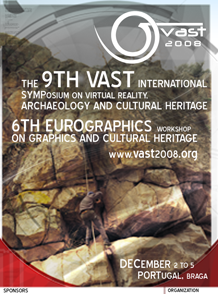Bracara Augusta - A Roman Town
Manuela Martins
The oldest archaeological evidences in Braga are dated from Late Bronze Age and were found in the Alto da Cividade. However, it is unlikely that the town's settling would have succeeded a proto-historic hillfort in the Alto da Cividade. Most likely, Bracara Augusta was founded by Emperor Augustus as extent of the Imperial programme of administrative reorganisation of the Iberian Peninsula after the end of the cantabric wars, probably around 16 BC.
Like the remainder of the Augustan creations in the Northeast, Bracara Augusta was born from the need of giving social and political structures susceptible of firming the Roman presence in the North; and, therefore, making the integration of the people from the north bank of the Douro river easier.
While the available archaeological data allows proving that Bracara Augusta arose ex nihilo, the known epigraphic material suggests a religious context to its creation, highly influenced by Augustus's charisma and the broadcasting of the Imperial cult.
It is likely that the new social community would have centralised important functions of a juridical, religious and economic nature articulated with its duties as seat of a conventus iuridicus. On the other hand, the town and the inhabitants' juridical status are still doubtful. In fact, one traditionally considers that Bracara Augusta would have been promoted to municipia in the last quarter of the first century. This would benefit the inhabitants of the ius latii, something that would allow the promotion of the native aristocracy to Roman citizenship. Nevertheless, it is possible that Bracara Augusta had already been created within Latin law, a fact that would have benefited the resident indigenous aristocracy right from the start. Anyway, either by privilege of foundation or by later municipal promotion, Bracara Augusta would have had autonomous government structures, with senate and magistrates. Archaeological and epigraphic data points out to a considerable development of the town throughout the Julius-Claudius dynasty. It is admissible that during the first half of the first century a systematic process of settlement of the new agglomerate would have happened.
Meanwhile, archaeology testifies that Bracara Augusta was an orthogonal town with well-aligned streets directed Northwest/Southeast, some of them with porticoes evolving the insulae in which the urban space were organised. Through the results of the excavations accomplished in various sites of the city perimeter, one can assert that Bracara Augusta would have reached its maximum extension in the second century. The urbanistic outbreak and the construction of monuments in Bracara Augusta between the end of the first century/middle of the second century, which was supported by municipal expenses, was accompanied by the flourishing of economic activities associated either by supplying a growing population with reasonable purchasing power; either by the regional flowing of the products manufactured in the town.
There is little that we know about the third century town. Notwithstanding, the excavations seem to unwrap a perfect continuity of urban life even though a shrinkage of the imports and the currency used can be noticed.
There is little that we know about the third century town. Notwithstanding, the excavations seem to unwrap a perfect continuity of urban life even though a shrinkage of the imports and the currency used can be noticed.
Between the end of the third century and beginning of the fourth an important urban renovation programme is registered in Bracara Augusta which comprehended significant remodelling in public and private buildings and the construction of a wall with towers. This programme seems to be associated to the city's promotion to capital of the Galaecia province, created by Dioclesianus, who integrated the three juridical convents of Northwest and part of the convent of Clunia. The remodelling made then, which was noticed in a great number of different sectors of the town, allow certifying that the urban aristocracy kept their town residence, conducting significant improvement of the houses, which frequently included the construction of private baths and mosaic pavements.
The available data to the period between the fifth and the eleventh centuries are reduced. On the other hand, archaeology do not give neither a clear register about the town's Swedish-Visigod occupation, nor the consequence of the region's Muslim incursions. Therefore, the historic period is still uncertain around 411, when Braga's region was delivered to the Swedish as a share, and the eleventh century, when the Medieval town was organised round the Cathedral which was consecrated in 1089.
Near the Museum D. Diogo de Sousa, where the VAST2008 Symposium talks will take place, it is possible visit the roman Public Thermal building, the roman Cloaca, the Carvalheiras archaeological area, the Santiago Domus (Pio XII Museum), the Frigideiras do Cantinho Ruins and the Idol Fountain. In fact the Thermal building is just a few meters away from the conference place and there one can also look at what is left of Bracara Augusta's roman Theatre.
























